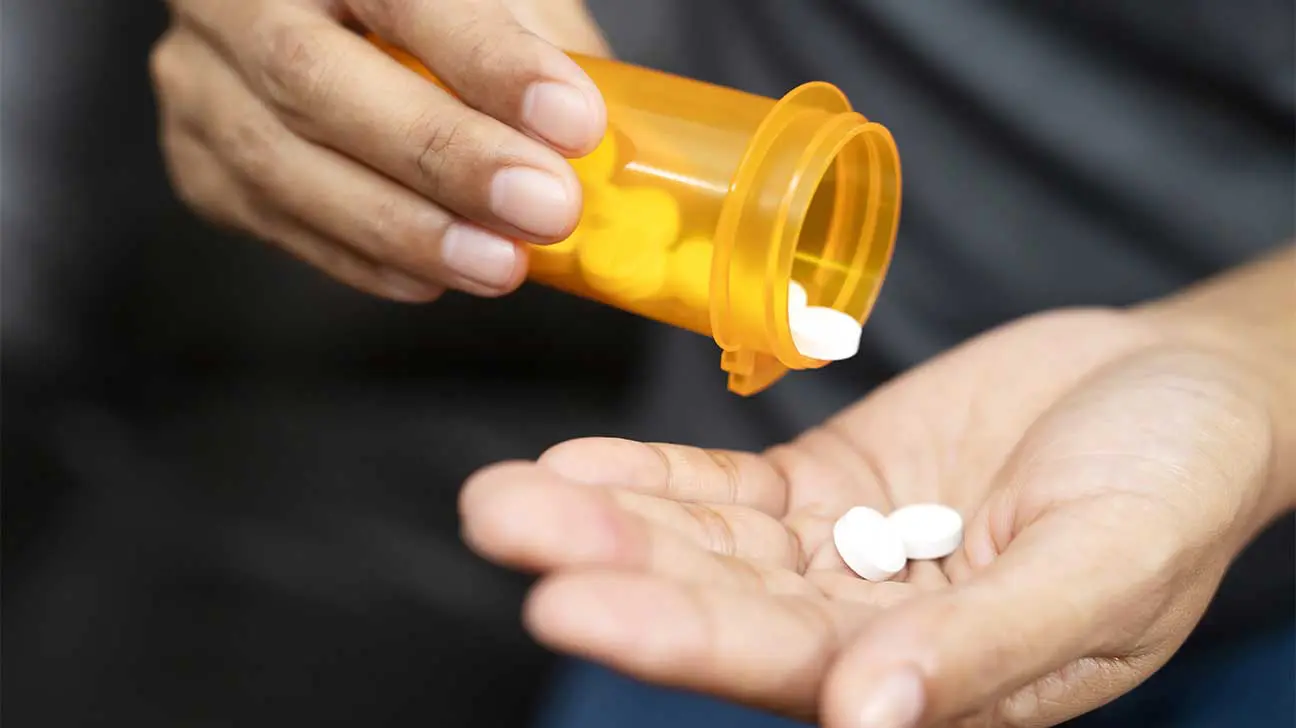
Mixing methadone and benzodiazepines can be a deadly combination. In addition to the individual side effects of each drug, they’re both CNS depressants. That means taking the two drugs together can have even more serious side effects.
The top three dangers of mixing methadone and benzodiazepines include:
- difficulty breathing
- central nervous system (CNS) depression
- overdose risk (death)
An overdose resulting in death is the worst possible outcome for someone taking both benzos and methadone. Of course, the risk is even more severe if the person is taking higher doses than his or her doctor is prescribing or using the drugs illicitly.
Methadone is an opioid agonist medication approved by the U.S. Food and Drug Administration to treat opioid use disorder. Unfortunately, a recent survey revealed that more than 30 percent of overdoses involving opioids also involve benzodiazepines.
Benzodiazepines (benzos) are a type of medication used to treat anxiety. This class of medications includes drugs like alprazolam (Xanax) and diazepam (Valium) among others.
Many people who struggle with opioid abuse may also be taking or abusing prescribed benzodiazepines. When these people seek help for opioid abuse and begin a medication-assisted treatment with methadone, they usually don’t mention that they’re also taking or abusing benzos.
This is where the situation can become dangerous. Both drugs carry a high risk for addiction (substance use disorder) and abuse, but those risk factors are much higher when a person is using the two together.
Side Effects Of Mixing Methadone And Benzodiazepines
Methadone and benzodiazepine prescriptions both have major side effects that can occur from regular use. Both drugs are central nervous system depressants, which means that several of the side effects are similar. These side effects can be worsened when taking both drugs together.
For example, Xanax (a common benzodiazepine) can cause any of these side effects to occur:
- drowsiness
- light-headedness
- headaches
- dizziness
- irritability
- difficulty concentrating
- nausea
- changes in behavior
- depression
- hallucinations
- seizures
Additionally, methadone can cause both common and serious side effects.
Possible side effects of methadone include:
- restlessness
- nausea or vomiting
- slow breathing
- itchy skin
- heavy sweating
- constipation
- sexual problems
- difficulty breathing
- light-headedness
- hives or a rash
- chest pain
- increased heart rate
- hallucinations or confusion
Many of the side effects of each drug are similar. When used together, the risk of light-headedness, nausea, hallucinations, and other common side effects is greatly increased.
Whether methadone and benzodiazepines are taken together at the doctor-recommended doses or abused in any way, these side effects are possible.
If you or someone you know is experiencing any of these side effects or has problems abusing methadone and benzodiazepines, contact health care providers immediately.
How Methadone Is Used In Opioid Addiction Treatment
Methadone is used as a medication-assisted treatment for opioid use disorder and pain management. In addition to methadone, treatment plans usually also include detoxification, counseling, and other behavioral health therapies.
According to the FDA, methadone maintenance programs have been shown to reduce the negative health effects and deaths caused by opioid addiction. Additionally, patients receiving medication-assisted treatments cut their risk of death from all causes in half.
Methadone is sold under the brand names Diskets, Dolophine, and Methadose in addition to generics. The active ingredient in these drugs (methadone) targets the same part of the brain that opioids affect. In this way, the drug can help to reduce opioid cravings, withdrawal symptoms, and other side effects of opioid use.
Legally, only certified treatment programs can prescribe methadone for the treatment of opioid use disorder. It’s taken under the supervision of a doctor, but after a while, patients may be allowed to take it at home between program visits.
When taken as prescribed, methadone can be safe and effective. Of course, people taking methadone with or without other drugs may still experience side effects.
Common side effects of methadone include:
- nausea
- vomiting
- constipation
- muscle aches
- cramps
- sleep problems
Methadone is specifically dosed for individual patients, and those doses are usually adjusted over time. Still, patients may require treatment with methadone (or a different medication-assisted treatment medication) indefinitely.
Why Mixing Methadone And Benzos Is Dangerous
While methadone and benzos can both be safe and effective treatments when used as prescribed by a doctor, they both come with risks of addiction and abuse. When used together, these risks are even greater.
Serious side effects and risk of overdose are increased when combining opioid pain medicines and benzodiazepines.
According to the FDA, combined drug use with methadone and benzodiazepines can amplify the risk of serious side effects. However, treatment plans that include careful medication management can help reduce these risks.
Methadone and benzodiazepines are both central nervous system (CNS) depressants. Combining them can be unsafe because both types of drugs can have sedative effects that make it difficult to breathe. Typically, this is the cause of overdose death.
Common warning signs of a drug overdose include:
- rapid heartbeat
- high body temperature
- chest pain
- dilated pupils
- difficulty breathing/shortness of breath
- gurgling sounds
- blue fingers or lips
- nausea or vomited
- violent behavior
- dizziness
- seizures
- unconsciousness or unresponsiveness
If you or someone you love is experiencing any of these symptoms, call 911 immediately. In some emergency situations, naloxone (Narcan) can treat a narcotic overdose.
Taking opioids or methadone and benzodiazepines together is extremely dangerous. For this reason, it’s important to be completely honest with your doctor or healthcare professional about what you’re taking, how much, and how often.
Other Prescription Drugs For Opioid Treatment Programs
In addition to methadone treatment, buprenorphine and naltrexone are medication-assisted treatment medicines used to treat opioid use disorders. These medicines are used for treating substance use disorders involving short-acting opioids including heroin, morphine, and codeine as well as oxycodone and hydrocodone.
Buprenorphine is marketed under the brand name Suboxone. Like methadone, it’s able to suppress and reduce the cravings for opioids.
Additionally, buprenorphine can have euphoric and sedative effects at recommended doses. It is weaker than methadone, and it can also be safe and effective when taken as prescribed.
Buprenorphine may be able to help:
- reduce the effects of opioid addiction, including withdrawal symptoms and cravings
- increase safety in cases of opioid overdose
- lower the potential for misuse
Alternatively, naltrexone is another prescription medication approved to treat opioid use disorder. It’s often sold under the brand name Vivitrol.
Unlike methadone and buprenorphine, there is no abuse and diversion potential with naltrexone. It isn’t addictive and it doesn’t cause withdrawal symptoms when you stop taking it.
Instead, naltrexone blocks the euphoric and sedative effects of opioids such as heroin, morphine, and codeine. It binds and blocks opioid receptors and helps to reduce and suppress opioid cravings.
Like methadone, buprenorphine and naltrexone are also safe to use for months, years, or indefinitely when regulated by a qualified healthcare professional.
Common Methadone And Benzo Drug Combinations
Mixing methadone and any benzodiazepine drug is extremely dangerous.
Common benzos mixed with methadone include:
Treatment Options For Polysubstance Use Disorders
If you or someone you know is abusing more than one drug, they’re likely having problems with a polysubstance use disorder. This can include an addiction to more than one of any type of drug.
It’s common for patients to abuse both methadone and benzodiazepines. Unfortunately, mixing the two can create a dangerous and deadly combination. For this reason, it’s important to seek help immediately if you or someone you know may be abusing methadone and/or benzos.
There are several successful treatment options to choose from when it comes to polysubstance use disorder, including both inpatient treatment and outpatient treatment.
Inpatient treatment is a more intensive and immersive option than outpatient treatment. With inpatient rehab, a patient will go into a detox facility and stay for several weeks or months. Generally, this is the most effective option for people with polysubstance drug use issues.
Whether it’s because of jobs, families, or other responsibilities, some people aren’t able to seek inpatient treatment. Outpatient treatment is another addiction treatment option where patients visit a treatment center several times a week for support and resources.
No matter which path the patient chooses, polysubstance use disorder treatment options may include:
- behavioral counseling
- medication
- evaluation and treatment for additional mental health issues like depression or anxiety
- long-term follow-up to prevent relapse
Because sudden discontinuation of benzos and/or methadone can be dangerous, it’s best to get in touch with a treatment specialist that can help you figure out the best plan for tapering off use of the drugs.
Find An Addiction Treatment Program Today
If you or someone you know is having problems with methadone abuse, opioid abuse, or benzo abuse, don’t put off getting help. We help people from all over the United States find treatment options that work for their individual needs.
Contact an AddictionResource.net treatment specialist today to learn more about finding a treatment facility that works for you.
Addiction Resource aims to provide only the most current, accurate information in regards to addiction and addiction treatment, which means we only reference the most credible sources available.
These include peer-reviewed journals, government entities and academic institutions, and leaders in addiction healthcare and advocacy. Learn more about how we safeguard our content by viewing our editorial policy.
- National Institutes of Health—Benzodiazepines And Opioids
https://www.drugabuse.gov/drug-topics/opioids/benzodiazepines-opioids - National Institutes of Health—Use Of Benzodiazepines And Detoxification With Methadone
https://www.ncbi.nlm.nih.gov/pmc/articles/PMC4391402/ - Substance Abuse and Mental Health Services Administration—MAT Medications, Counseling, and Related Conditions
https://www.samhsa.gov/medication-assisted-treatment/medications-counseling-related-conditions#medications-used-in-mat - Substance Abuse and Mental Health Services Administration—Methadone
https://www.samhsa.gov/medication-assisted-treatment/medications-counseling-related-conditions/methadone - U.S. Food and Drug Administration—Drug Safety Communications
https://www.fda.gov/media/107888/download - U.S. Food and Drug Administration—Xanax
https://www.accessdata.fda.gov/drugsatfda_docs/label/2016/018276s052lbl.pdf


